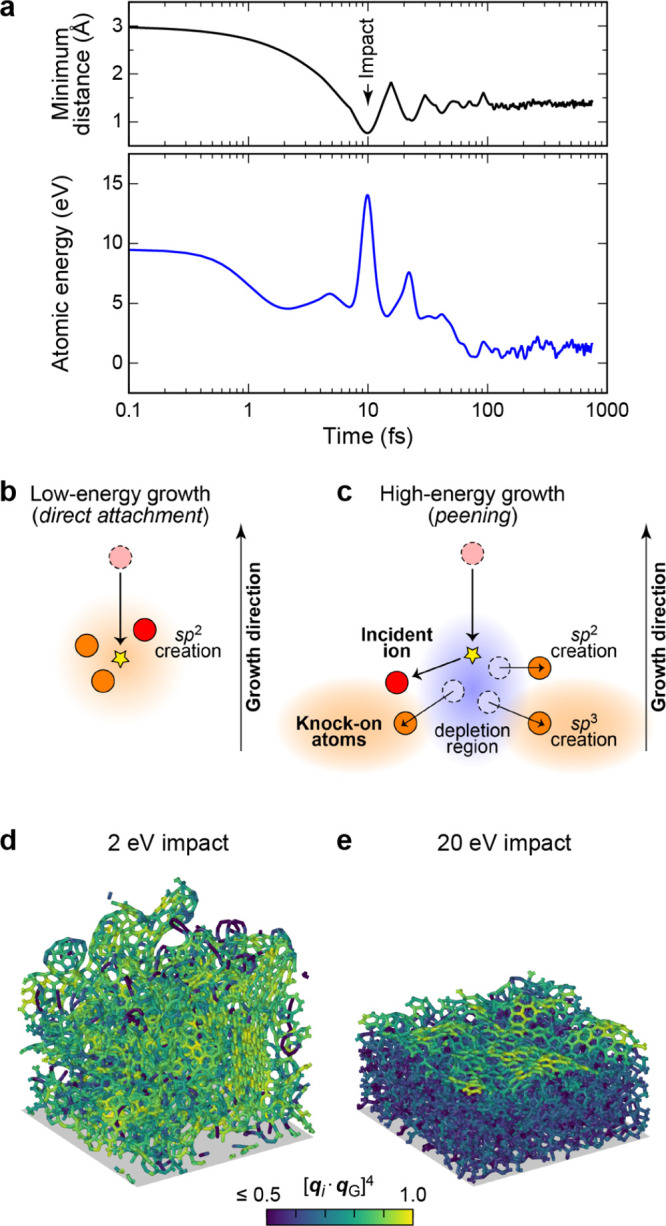Figure 32.

GAP-driven deposition simulations describing the growth of amorphous carbon films.200,263 (a) Example of an impact event: a carbon atom is placed 3 Å above the surface and given high velocity (corresponding to a kinetic energy of 60 eV). Within 10 fs, the atom impinges on the surface (corresponding to a spike in the energy of this atom; blue) and then comes to rest such that its nearest-neighbor distance is about 1.5 Å. (b, c) Schematic drawings of the proposed growth mechanisms at low and high impact energies, respectively, that are consistent with density changes over time observed in the GAP-MD simulations. Details, as well as quantitative data supporting these drawings, are given in ref (200). (d, e) Results of deposition simulations at two representative impact energies. The structure in panel d is a low-density, sp2-rich phase; that in panel e is a high-density, sp3-rich phase, in which only the surface region has substantial sp2 character (as determined by SOAP-based similarity and indicated by color coding). Reprinted with permission from ref (200). Copyright 2020 by the American Physical Society.
